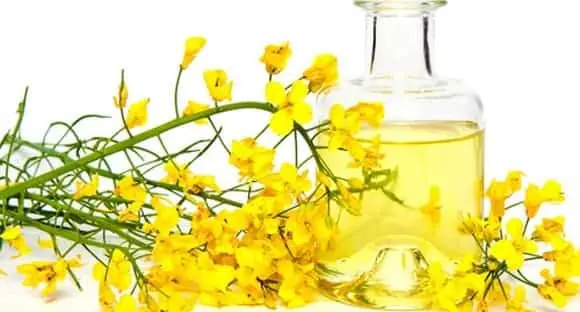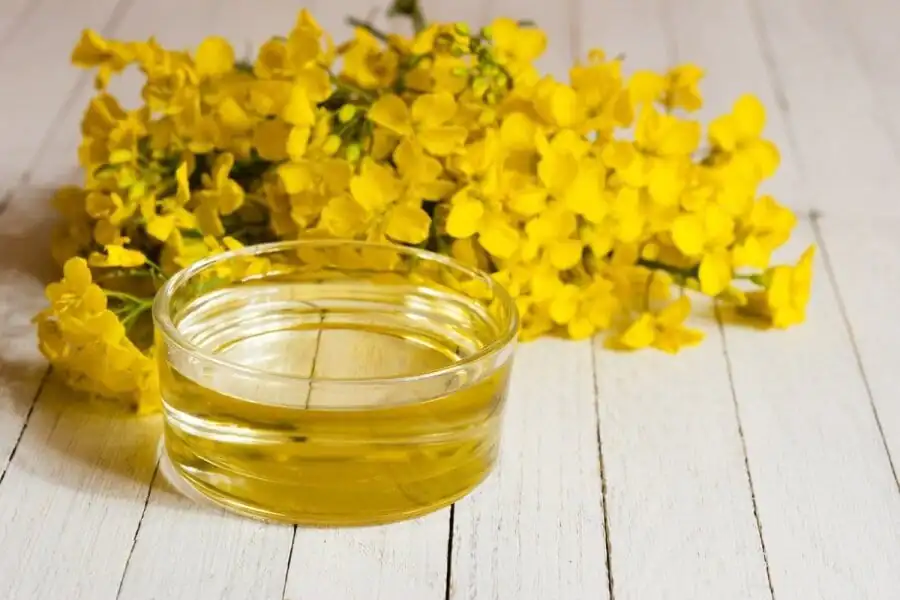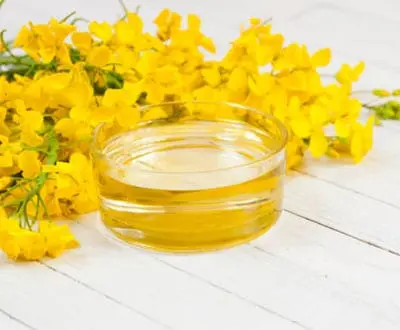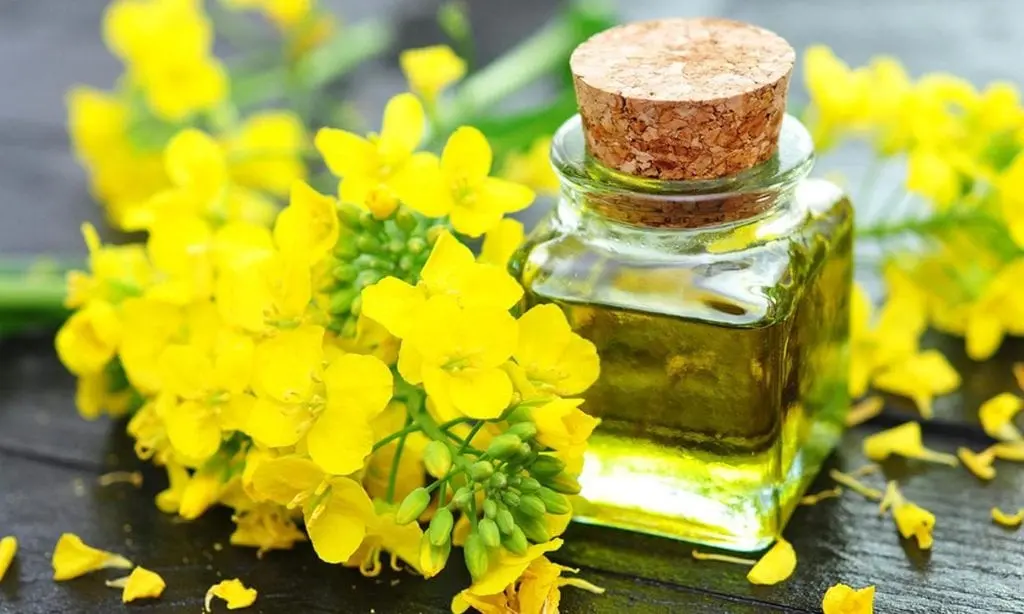Contents
Description
Rapeseed, like rapeseed oil in our country, is conquering more and more sown areas. And in the same way, rapeseed oil appears more and more often on our table. So far – only as an experiment or trial, but sometimes – already as a completely familiar ingredient in the diet.
In the ranking of tasty and healthy oils, olive and linseed oil are in first place in European countries, followed by rapeseed oil, and only then our traditional sunflower oil.
All vegetable oils are based on three fatty acids: oleic (Omega-9), linoleic (Omega-6) and linolenic (Omega-3). Their composition in rapeseed oil is very well balanced, and this is not the case in any oil other than olive oil.
Specially refined rapeseed oil contains more different fatty acids and is therefore healthier than expensive premium olive oil. Today, rapeseed oil has become more commonly used in various healthy diets, replacing other vegetable oils.
The quality of other oils is lower and digestibility is more difficult. Omega-9 (these are monounsaturated fatty acids, they lower the level of “bad” cholesterol in the blood) in rapeseed oil 50 – 65%, in olive oil – 55 – 83%.
History of rapeseed
Rape has been cultivated since time immemorial – it is known in culture as far back as four millennia BC. Some researchers consider the homeland of rapeseed, or, as Europeans call it, reps, Europe, in particular Sweden, the Netherlands and Great Britain, others – the Mediterranean.

In Europe, rapeseed became famous in the 13th century, where it was used for food and for lighting premises, as rapeseed oil burns well and does not give off smoke. However, before the development of steam power, its industrial use was rather limited.
But by the middle of the 19th century, rapeseed had become very popular – it was found that rapeseed oil adheres better than any other lubricant to metal surfaces in contact with water and steam. And the young oil industry at that time still could not satisfy all the need for technical oils.
But by the beginning of the 20th century, the appearance of a large number of cheap oil products caused a sharp drop in the volume of rapeseed cultivation.
Rape is sometimes called the northern olive, apparently because the oil obtained from its seeds is almost as good as olive oil in its taste and nutritional properties. However, they started talking about its benefits relatively recently. Until the 60s of the 20th century, rapeseed oil was used exclusively for technical purposes – in the textile and leather industries, in soap making and in the production of drying oil.
They began to eat rapeseed oil only after an effective way of cleaning seeds from toxic erucic acid, which is found in large quantities in the oil, up to 47-50%, was found.
As a result of many years of breeding work in 1974 in Canada, a new variety of rapeseed was licensed, called “canola” from a combination of two words – Canada and oil (oil), in which the share of erucic acid did not exceed 2%. And although canola oil is still exotic for Russia, it is very popular in Canada, the USA and Western Europe.
Composition of rapeseed oil
A feature of rape seeds is the presence of organic sulfur compounds – thioglucosides (glucosinolates), as well as sulfur-containing amino acids. The selection for non-erukism turned out to be inextricably linked with selection for the low content of glucosinolates.
Rapeseed meal is a high-protein feed, it contains 40-50% protein, balanced in amino acid composition, similar to soy. But the meal contains glucosinolates (glycosides of monosaccharides in which the oxygen of the carbonyl group is replaced by a sulfur atom), the products of their decay – inorganic sulfate and isothiocyanates – have toxic properties.

In modern varieties of oilseed rape seeds, the content of glucosinolates does not exceed 1% by weight of dry fat-free substance. Direct detection and quantitative analysis of thiogucosides and isothiocyanates in rapeseed and oil is laborious, time-consuming and not always effective. For this reason, the presence of the above mentioned compounds is judged by the content of sulfide sulfur.
Rapeseed oil contains linoleic, linolenic, oleic fatty acids, vitamins A, D, E, as well as antioxidan
Rapeseed oil has become so widespread in the industrial sector largely due to its atypical composition. The fatty acid composition of the oil combines rather large impurities of two basic acids – from 40 to more than 60% of the oil volume falls on erucic acid, up to 10% – on ekozenic acid.
It is believed that both of these acids have an extremely negative effect on the state of the myocardium and the functioning of the heart. Therefore, today oil intended for internal use is produced from varietal rapeseed, the content of these acids in which is artificially reduced.
In an oil suitable for internal use, more than 50% of the composition falls on oleic acid, up to 30% – on linoleic acid, up to 13% – on alpha-linolenic acid.
The benefits of rapeseed oil

Many vegetable oils are primarily valuable for their content of polyunsaturated fatty acids, which are not produced in the body, but are essential for maintaining many vital processes.
A complex of these substances, often called vitamin F, which contains omega-3, 6 and 9 acids, is also present in rapeseed oil. It is noteworthy that it is in this vegetable oil that omega-3 and omega-6 acids are presented in a 1: 2 ratio, and this balance is considered optimal for the body.
Vitamin F is essential for maintaining normal fat metabolism, which is why rapeseed oil is considered a healthy product. With its sufficient intake in the body, lipid metabolism is normalized, the amount of harmful cholesterol in the blood decreases.
Therefore, with regular use of rapeseed oil, the formation of cholesterol plaques on the walls of blood vessels decreases, and therefore, the risk of developing atherosclerosis, cardiovascular diseases and their complications decreases. In addition, omega acids help to strengthen the walls of blood vessels, making them more elastic and durable.
Polyunsaturated fatty acids are involved in regenerative processes, necessary for the normal functioning of the heart, liver, pancreas, kidneys, brain and other organs. Thanks to the polyunsaturated fatty acids it contains, rapeseed oil will help strengthen the nervous and immune systems, remove accumulated harmful substances from the body, and accelerate recovery from illness.
Vitamins in Rapeseed oil
This vegetable oil contains a sufficient amount of vitamin E, the deficiency of which negatively affects the condition of the skin, hair, nails, and the human reproductive system. In addition, this vitamin is one of the natural antioxidants necessary for maintaining youth and health, as they prevent the formation and accumulation of free radicals in the body.

In addition to vitamin E, rapeseed oil contains B vitamins, vitamin A and a large amount of trace elements (phosphorus, zinc, calcium, copper, magnesium, etc.), which are necessary for the health of every person.
Rapeseed oil is recommended to be introduced into the diet for people suffering from diseases of the gastrointestinal tract, since it has anti-inflammatory and regenerative effects, reduces the acidity of gastric juice, and also has a mild laxative effect.
Rapeseed oil is especially useful for women, because the substances that make up it are necessary for the formation of female sex hormones. Thus, regular use of this product helps to reduce the risk of infertility, as well as diseases of the female genital area, including cancer. Rapeseed oil is also useful for pregnant women: the substances contained in it contribute to the normal development of the fetus.
To heal the body and get the daily intake of many useful substances, it is enough to consume 1-2 tablespoons of rapeseed oil a day.
Harm and contraindications
Rapeseed oil contains erucic acid. The peculiarity of this acid is that it is not able to be broken down by the body’s enzymes, therefore it accumulates in the tissues and helps to slow down growth, delays the onset of puberty.
Also, erucic acid leads to disturbances in the work of the cardiovascular system, causes cirrhosis of the liver and infiltration of skeletal muscles. The safe threshold for the content of this acid in oil is 0.3 – 0.6%. In addition, the harm of rapeseed oil is caused by sulfur-containing organic compounds that have toxic properties – glycosinolates, thioglycosides and their derivatives.
They negatively affect the thyroid gland and other organs, and give the oil a bitter taste.

Breeders have developed rapeseed varieties in which the content of erucic acid and thioglycosides is minimal or completely reduced to zero.
Contraindications to the use of rapeseed oil are diarrhea, individual intolerance, acute chronic hepatitis, as well as cholelithiasis in the acute stage.
Taste qualities of rapeseed oil and its use in cooking
Rapeseed oil is characterized by a pleasant aroma and light nutty taste, the color can vary from light yellow to rich brown. In cooking, it is used as a useful dressing for salads, as well as a component of various sauces, marinades, mayonnaise.
Experts recommend using the product in its raw form, since rapeseed oil may lose its original characteristics during heat treatment.
A distinctive feature of this type of oil is its property to be stored for a long time, not to lose transparency and not to acquire an unpleasant odor and characteristic bitterness, even after a long time. Ideal storage conditions are considered to be cool, dark places where rapeseed oil can stay fresh for up to five years.
When choosing rapeseed oil, you need to pay attention to the fact that there is no dark and cloudy sediment at the bottom of the bottle – it indicates that the product has managed to turn rancid. Also, the label always indicates the percentage of erucic acid – normally it ranges from 0.3 to 0.6%.
Rapeseed oil in cosmetology

Rapeseed oil moisturizes, softens, nourishes and regenerates the skin well, therefore it is often used in dermatology and cosmetology.
The cosmetic properties of rapeseed oil are used to make various products for hair and skin care. Suitable for problem skin that is prone to acne breakouts – in pure form or in a fraction of the composition.
This is due to the fact that rapeseed oil contains vitamins, natural protein and insulin, mineral salts, as well as acids – stearic and palmitic. It is advisable to use it in creams intended for the care of mature skin.
A good component in hair care cosmetics – conditioners, masks, balms.
Often used to make soap from scratch with base oil.










Grotesque lies. Rapeseed oil actually depletes the body of Vitamine E. And studies have now repeatedly shown Rapeseed and Canola oil are without a doubt harmful and toxic to the body, even in small amounts. In addition, over 80-85% (possibly more) of this oil is derived from pesticide (Roundup) resistant (aka GMO) plants. Whoever wrote this article is either knowingly deceiving readers or is truly an uninformed moron. You deserve to be bought to court for telling readers a harmful substance is “safe”.